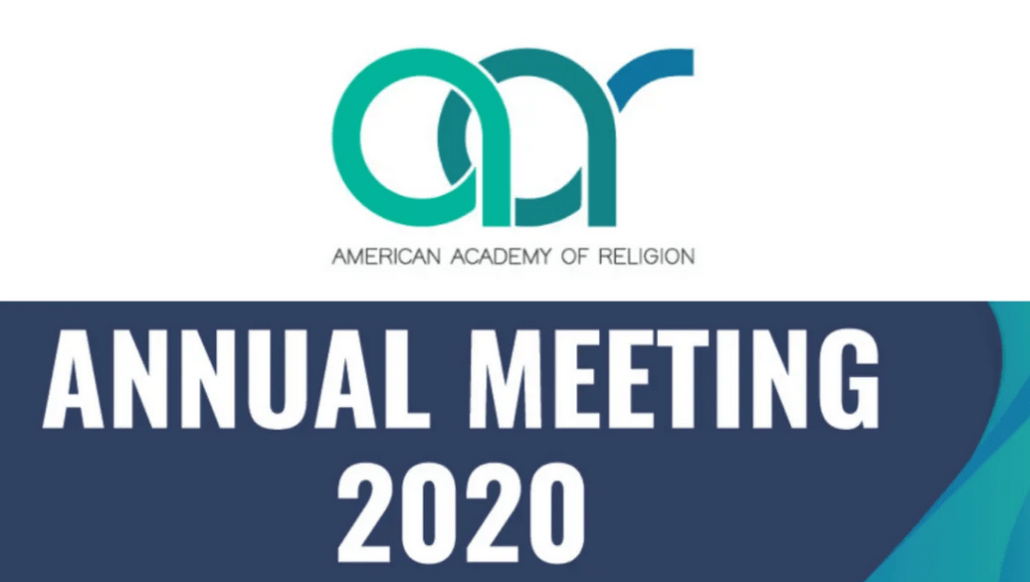Virtual Attendance in the American Academy of Religion Annual Meeting—December 2020
Staying in one place since June (in my country retreat in Poland, due to the pandemic) has been good for the physical “system” after years of fairly constant travel. Like so many of us who are ensconsed in the Internet, much of our “travel” is digital. My earlier intention to travel to the U.S. at this time of year was in part to attend the annual American Academy of Religion meeting, meant to be held this year in Boston. Instead, the meeting was reorganized to be a virtual one, and my scheduled presentation in one of the panels of the Religion in South Asia section was two nights ago (10:00 to 11:30 Polish time).
The theme of our panel of four presenters was “The Implications of Being Earnest: Sincerity in South Asian Contexts,” and my own all-of-15-minutes presentation was titled “Earnestness in Hearing and Reading the Bhāgavata Purāṇa.” In my paper, I suggested that prescriptions for proper hearing of the Bhāgavatam that are found within the Bhāgavatam give us clues how and why present-day readers of this “pre-modern” text find it so valuable and relevant. I refer to the religion scholar Paul J. Griffiths’ notion of “religious reading” as helpful for understanding this Bhāgavata reading practice. In his book Religious Reading: The Place of Reading in the Practice of Religion (1999), Griffiths argues that when properly practiced, earnest religious reading will lead to a reading being able to “give a religious account of things” that has three features, namely, comprehensiveness, unsurpassability, and centrality.
Anticipating a possible doubt about the appropriateness of such an account, I wrote a sort of “addendum” to my paper which I knew in advance I would not have time to read during the conference. So, I give myself the liberty to post it here, with apologies for not providing the entire paper to which the addendum applies.
The time constraint for this presentation prevents me from discussing actual current Bhāgavata religious reading practices and how late modern sensibilities may be engaged in this premodern text in non-reductive ways. Rather, I have focused on two significant narratives (and one shorter narrative) in the text in order to suggest how religious readers might be drawn to experience the three features of a religious account, namely, comprehensiveness, unsurpassability, and centrality. But since these three abstract nouns may sound alarm bells, warning us of what Jean-François Lyotard called “the mutterings of the desire of a return of terror” arising from metanarrative—or “grand narrative”—oppressiveness, in these concluding remarks, I should mention two brief points in this regard, in defense of the Bhāgavata assemblage of narratives, which I would refer to as a “ dynamic polymorphic narrative” rather than a “metanarrative” in its negative sense.
A first point to make, following Huston Smith, is that the “uncompromising dichotomy that Lyotard erects between wholes and parts is unconvincing” (Smith 2000:359 [“Methodology, Comparisons, and Truth” in A Magic Still Dwells: Comparative Religion in the Postmodern Age. Epub]). This is particularly true of the Bhāgavata, which has as one of its primary philosophical-theological projects to articulate plausible relationships between wholes and parts, thereby fundamentally questioning the dichotomy. This project is inseparable from its unapologetic exhortation (in its very first strophe) to contemplate (dhīmahi) ultimate truth (param satyam), as I have previously mentioned. The dynamic, ever-expanding character of the Bhāgavata’s ultimate—or absolute—truth (brahman, which is identified as nondual—advayam, is further identified as paramātman and bhagavān), points to its inclusiveness, its conscious reversal of marginalization, social marginalization being the basic moral objection to metanarratives.
The second point to make about the Bhāgavata as metanarrative is with respect to the ludic component to several of its narratives. While the Bhāgavata has its share of comedy that highlights human (or celestial) folly, of particular note is its celebration of divine comedy: Krishna reveals an ever-unfolding show of lightheartedness that draws religious readers to his gravitational field of charm as the most profoundly serious core of their sense that the text provides the basis for their religious account of things as being indeed comprehensive, unsurpassable, and central to their lives. Thus the practice of Bhāgavata religious reading sustains a center of intellectual and emotional gravity for present-day readers out of which arises a dynamic and newly unfolding connection between the world of the Bhāgavata and the Bhāgavata in the world.

